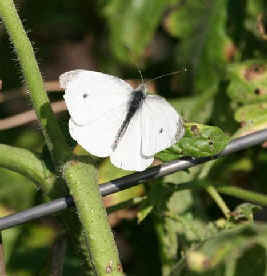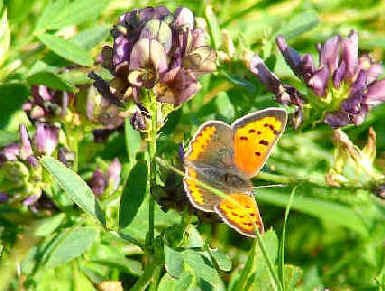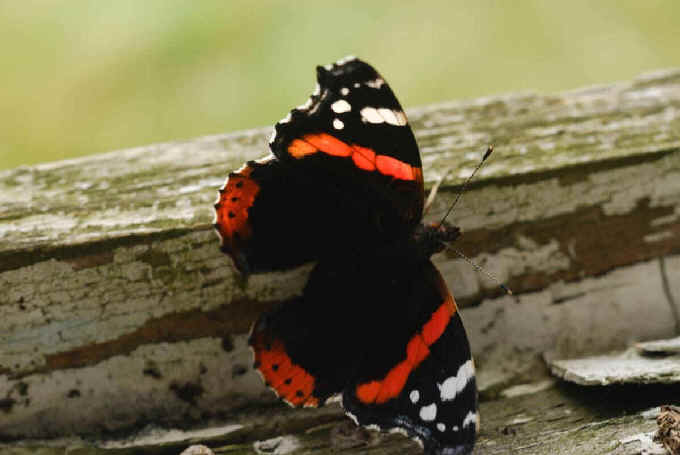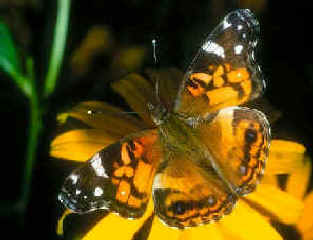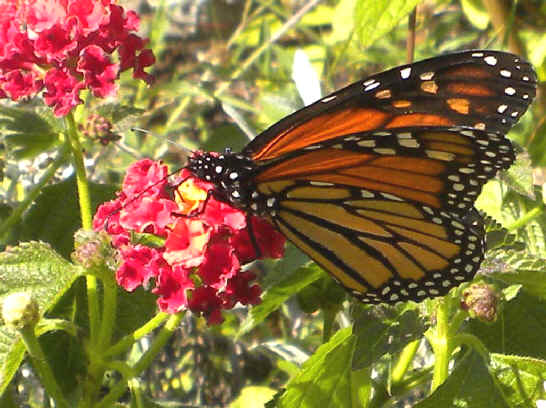
E-mail: font@focusonnature.com
Phone: Toll-free in USA 1-888-721-3555
or 302/529-1876
 |
PO Box 9021,
Wilmington, DE 19809, USA E-mail: font@focusonnature.com Phone: Toll-free in USA 1-888-721-3555 or 302/529-1876 |
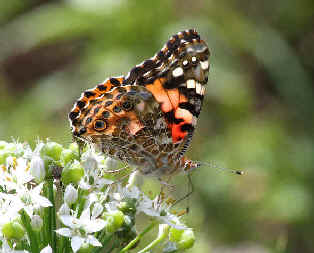 Butterflies
Butterflies
in the
Canary Islands
noting those seen during
Focus On Nature Tours
A List of Canary Islands Butterflies
compiled by Armas Hill
Upper right photo:
PAINTED LADY
(photograph by Doris Potter)
Codes:
Numbers noted as (C:xx) refer to pages in "A World of Butterflies", with text by
Brian Cassie, and photographs (superb) by Kjell Sandved
Numbers noted as (F:xx) refer to pages in "The Illustrated Encyclopedia of
Butterflies", by Dr. John Feltwell
Numbers noted as (S:xx) refer to pages in the
"Smithsonian Handbook, Butterflies & Moths", by David Carter
Status of the butterflies in Europe:
(ce): critically endangered
(en): endangered
(vu): vulnerable
(nt): near-threatened
In Europe, nearly 9% of the butterflies are threatened, and another 105 are
near-threatened.
Almost a third (31%) of the butterflies of the continent are known to have a
declining population.
Geographical Codes, relating to the
Canary Islands:
EH: found on El Hierro
FV: found on Fuerteventura
GC: found on Gran Canaria
LG: found on La Gomera
LP: found on La Palma
LZ: found on Lanzarote
TE: found on Tenerife
Throughout the world, there are over 180,000 described species of butterflies
and moths (in the order Lepidoptera).
In the Canary Islands there are about 600 species of Lepidoptera (butterflies
& moths). More than a quarter of these are found nowhere else in the
world.
Among the endemic butterflies, there are 4 restricted to the western islands of the
archipelago.
Most of the butterflies of the Canary Islands are of Palaearctic origin, 75%. 16%
(5 species) are Ethiopian. 6% (2 species) are Nearctic, and 3% (1 species) has
Oriental affinities.
In the following list of Canary Island butterflies, 35 species are included.
Links to Groupings in this List:
Gossamer Wings: Family Lycaenidae Brushfoots: Family Nymphalidae
Skippers:
Family Hesperiidae
Moths
SOME COMMENTARY REGARDING BUTTERFLY IDENTIFICATION:
"Get a guidebook, take a few years, and
you'll still make mistakes. Butterfly identification has an initial, deceptive
simplicity.
Individuals in a species vary naturally, an eyespot slightly larger, a color
brighter.
Males and females of a species can be strikingly dissimilar.
So can genetic morphs or forms within a gender.
In a single species, butterflies that live in a range of habitats can vary in
appearance and produce different populations or geographical races, each better
adapted to its environment.
Species can also produce generations of distinct morphs in the same place at
different times of the year."
The above commentary taken from the book, "An Obsession with
Butterflies", by Sharman Apt Russell (a wonderful read).
Other Links:
Upcoming
FONT Birding & Nature Tours in Europe
Butterflies & Moths of Europe (with some photos)
Birds
of the Canary Islands
Mammals &
Marine Life of the Canary Islands Amphibians & Reptiles of the Canary Islands
Interesting Plants of the Canary Islands
Directory of Photos in this Website
A List of Canary Islands Butterflies:
Family PIERIDAE: most are predominantly white, yellow, or orange in color,
and
are often referred to as WHITES, YELLOWS, SULPHURS, or MARBLES
Worldwide, approximately 1,000 species of whites & sulphurs have been
described.
Subfamily COLIADINAE: SULPHURS 300 species worldwide
Genus COLIAS: A large group of "YELLOWS", "SULPHURS", and
"CLOUDED YELLOWS"
mostly in the Northern Hemisphere (in North
America & Eurasia), but also in Australia, Africa,
and South America.
Sexes
are dimorphic.
Many of the species are strong migrants.
They breed extensively
on members of the Leguminosae, the pea family.
